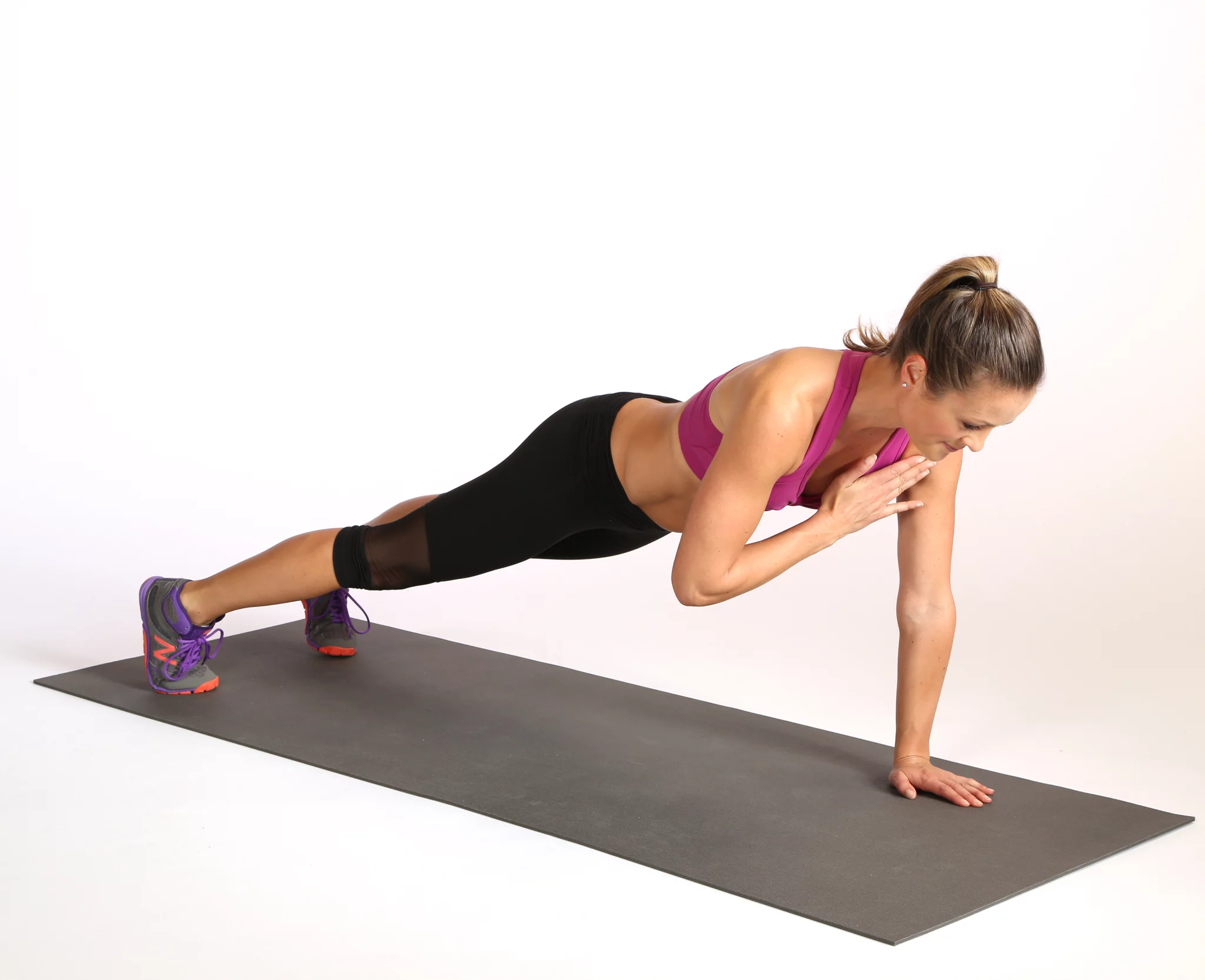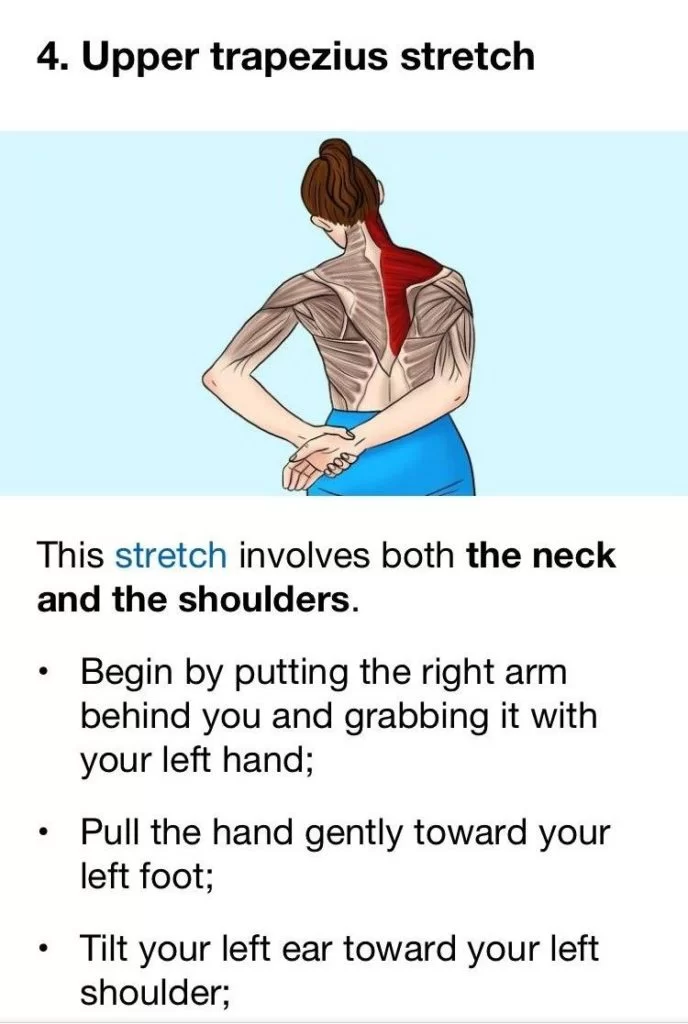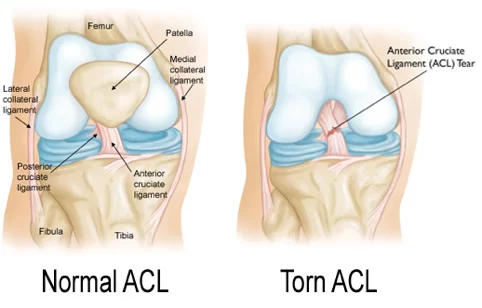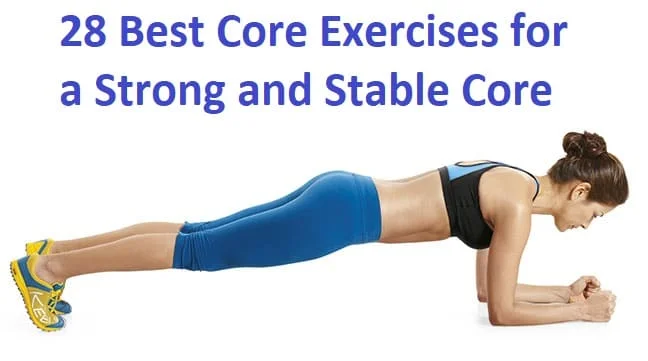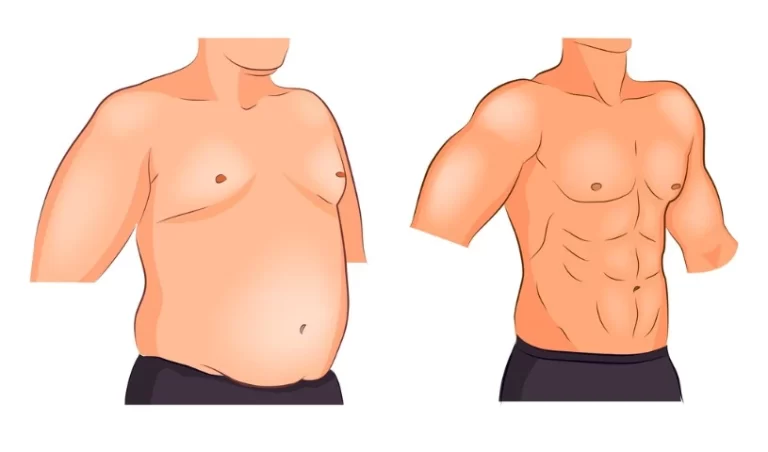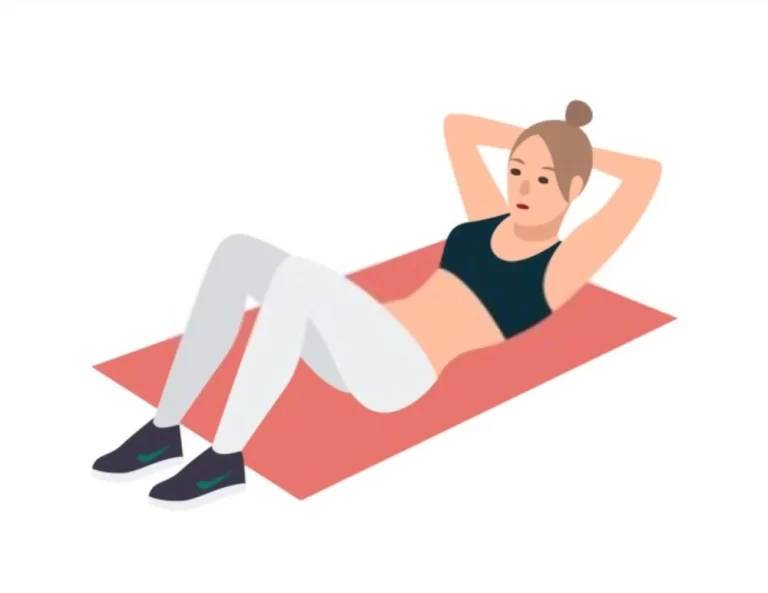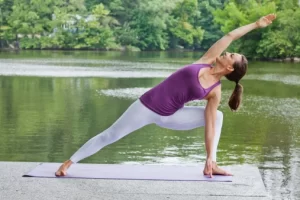25-Best Full Body Exercises
Introduction
A full-body Exercise is a type of workout that targets all of the major muscle groups in your body in a single session. This can be done with various exercises, both bodyweight and weight-bearing.
Full-body workouts are a popular choice for beginners and experienced lifters alike. They are efficient, and effective, and can help you achieve various fitness goals, including building muscle, burning fat, and improving overall fitness.
Muscle-strengthening activities can be classified as upper-body, lower-body, or core workouts. Yet, different exercises work most of an individual muscle at once, supplying a full-body exercise.
A full-body workout utilizes a mixture of muscle groups in an individual body, instead of just one. Not every exercise will work on every muscle, but these exercises generally work on the upper body, lower body, and core.
Exercise should contain aerobic exercise as well as muscle-strengthening.
Multiple muscle-strengthening workouts improve a person’s heart rate and breathing, but an individual should ideally do aerobic activity for 20–30 minutes per day. This is more prolonged than muscle-strengthening activities usually last.
However, by mixing a few exercises that work several muscle groups, including both aerobic exercise & muscle-strengthening exercises, an individual makes sure that they are exercising each part of their body.
The Benefits of Full-Body Exercises
Full-body workouts are an excellent method to boost your fitness and wellbeing. They involve working all of the major muscle groups in your body in one workout. Full-body workouts have many benefits, including:
- Efficient calorie burn: Full-body workouts are a great way to burn calories quickly and efficiently. When you work multiple muscle groups at the same time, your heart rate increases and you burn more calories.
- Improved cardiovascular health: Full-body workouts can also help to improve your cardiovascular health. By increasing your heart rate and breathing, you can strengthen your heart and lungs.
- Increased muscle strength and endurance: Full-body workouts can help to increase your muscle strength and endurance. By working all of your major muscle groups regularly, you can build stronger and more durable muscles.
- Reduced risk of injury: Full-body workouts can help to reduce your risk of injury by strengthening your muscles and improving your balance and coordination.
- Improved overall fitness and health: Full-body workouts can help to improve your overall fitness and health in several ways. They can help you lose weight, build muscle, improve your cardiovascular health, and reduce your risk of injury.
Full-body workouts are a good option for people of all fitness levels. They can be modified to make them easier or more challenging, depending on your needs. Full-body workouts are also a good option for people who are short on time, as you can get a full-body workout in one session.
25- Best Full-Body Exercises
Focus on working your upper body with this range of easy-to-follow exercises at home, with no equipment needed.
1. Alternating punches
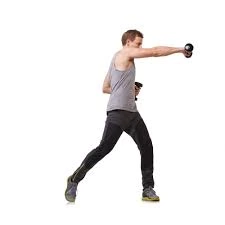
The alternating punches exercise is for Shoulders, chest, and triceps strengthening. The alternating punches exercise is a great way to improve your cardiovascular health, hand-eye coordination, and punching power.
How to do it:
- To perform the alternating punches exercise, stand with your feet shoulder-width apart and your fists clenched at your sides.
- Begin by punching forward with your right hand, then immediately follow up with a punch from your left hand. Continue alternating punches back and forth, keeping your core engaged and your shoulders relaxed.
- Aim to punch at a moderate pace for 30-60 seconds.
- If you are new to the exercise, start with a shorter interval and gradually increase the duration as you get stronger.
- Improve the speed and force of each punch and raise onto the balls of your back foot to induce more additional force. Hold two dumbbells/lightly weighted objects to improve resistance.
2. Side and lateral arm raises
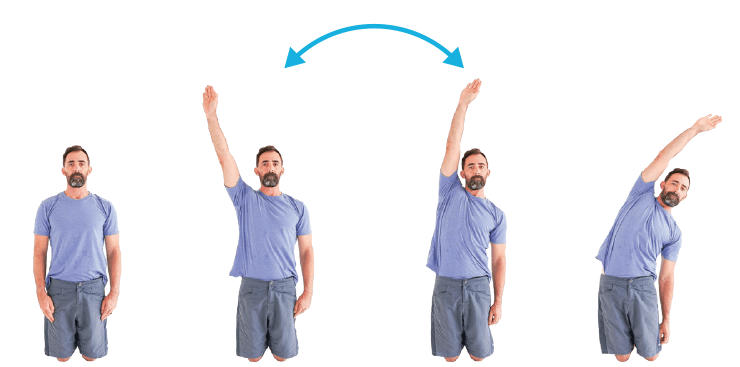
The side and lateral arm raises exercise is a great way to strengthen your shoulders, especially your lateral deltoids. It is also a good exercise for improving your posture and upper body stability.
How to do it:
- Stand with your feet shoulder-width apart and your arms at your sides, palms facing in.
- Hold a dumbbell in each hand.
- Gradually extend your arms out to the sides until they are parallel to the base. Hold your elbows a little bent and your core engaged.
- At the top of the action, pause for a second, then gently descend your arms down to the starting position.
- Repeat for 10-12 repetitions
- Grasp two dumbbells or weight objects and perform the exercises with the counted resistance. Delay the return phase of the movement down.
3. Shoulder press
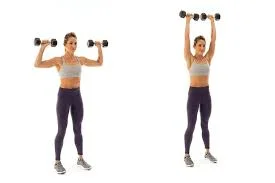
The shoulder press is a compound exercise that works multiple muscles in the upper body, including the deltoids, triceps, and trapezius. It is one of the best exercises for building shoulder strength and size.
How to do it:
- Stand with your feet shoulder-width apart & keep a dumbbell in both hands at shoulder height, with your palms facing forward.
- Push the dumbbells overhead until your arms are completely stretched.
- Pause at the top of the motion, then gradually lower the dumbbells back to the starting place.
- Raise the weight of dumbbells or weight objects and execute the exercises with the counted resistance. Slow the return step of the move down.
4. Press-ups /Push-ups
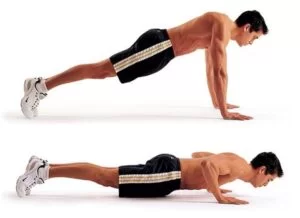
Push-ups are a compound exercise that works multiple muscle groups, including the chest, triceps, shoulders, and core. They are one of the most basic and effective exercises you can do, and they can be modified to make them easier or more difficult, depending on your fitness level.
How to do it:
- Begin in a plank pose, with your hands shoulder-width apart and your body in a straightforward line from your head to your heels.
- Lower your body down until your chest touches the ground, keeping your core engaged and your back straight.
- Move yourself back up to the initial position.
If you are a beginner to push-ups, you can begin by doing them on your knees. Once you can do 10-12 push-ups on your knees with good form, you can try doing them on your toes.
Place your feet on a raised surface e.g. a step or the couch and conduct the exercise in a decline position.
5. Floor tricep dips
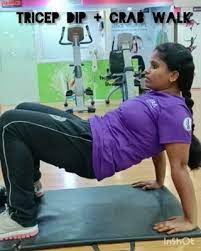
Floor tricep dips are a bodyweight exercise that targets the tricep muscles in the back of your upper arms. They are a good beginner exercise for those who are new to strength training, as they do not require any equipment and can be modified to make them easier or more challenging.
How to do it:
- Seat on the base with your knees flexed and your feet flat on the base.
- Place your hands behind you on the ground, shoulder-width apart, with your fingers pointing forward.
- Raise your hips off the base so that your body forms a straightforward line from your head to your heels.
- Gradually lower your body down until your elbows are flexed at a 90-degree angle.
- Pause briefly, then drive back up to the starting position.
- Maintain your core engaged throughout the complete movement.
- Do not let your back droop or your hips drop.
- If you discover that the exercise is too difficult, you can change it by placing your knees on the base or by utilizing a resistance band to assist you.
6. Inchworms/Mountain climbers
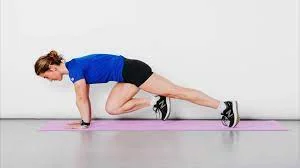
The inchworm exercise is a full-body exercise that works the core, shoulders, chest, back, hamstrings, and calves. It is a great way to warm up before a workout or to use as a standalone exercise.
How to do it:
- Begin in an erect position with your feet shoulder-width apart.
- Hinge at the hips and walk your hands forward until you are in a plank position.
- Move your feet forward until they are adjacent to your hands.
- Repeat steps 2 and 3 until you reach the end of the room or until you reach your desired number of repetitions.
How to progress: Increase the number of press-ups for each repetition.
7. Plank raise/Plank up and down
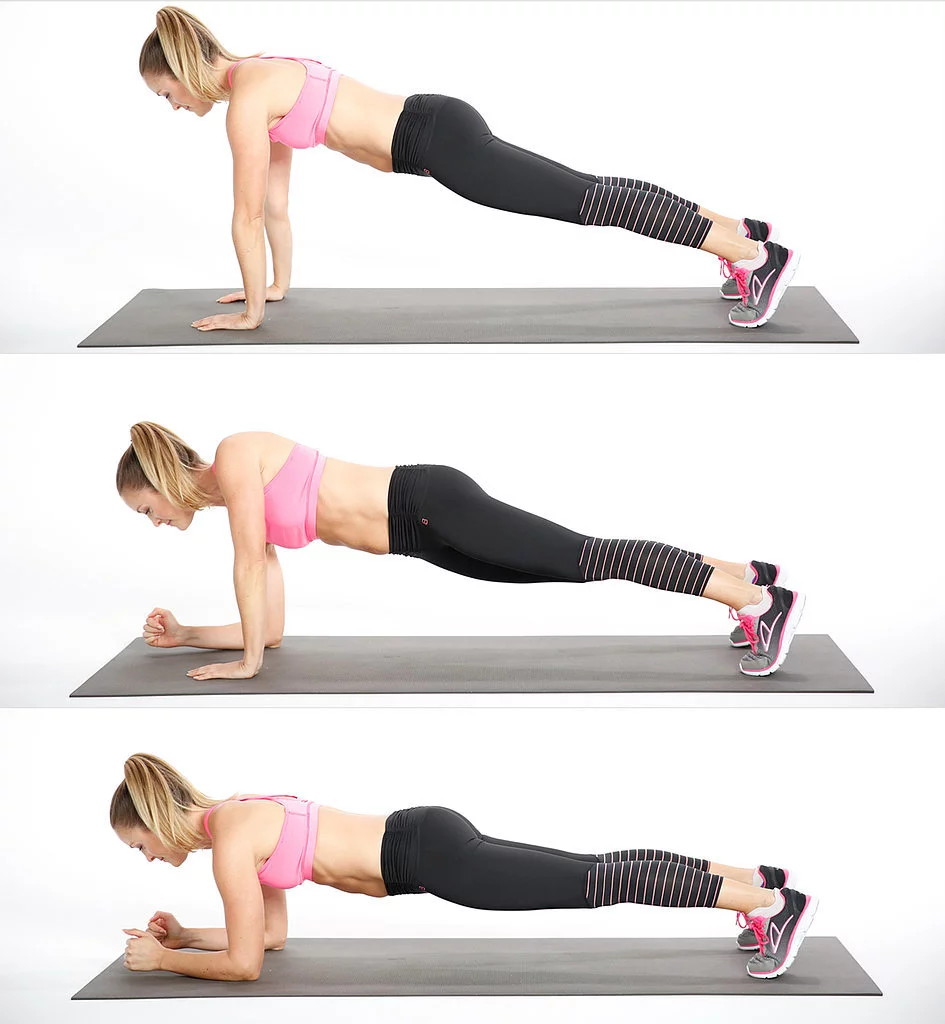
The plank raise is a bodyweight exercise that targets the core muscles, including the rectus abdominis (abs), transverse abdominis (deep core muscles), and obliques. It is a great way to improve core strength, stability, and endurance.
How to do it:
- Begin in a plank pose with your forearms on the floor and your body creating a straight line from your head to your heels.
- Lift the pelvis off the base until it is parallel to the base.
- Hold for a second or two, then lower your pelvis back to the starting position.
- Maintain your core engaged throughout the whole exercise.
- Do not let your back sag or your hips drop.
- If you find the exercise too difficult, you can modify it by raising your leg a shorter distance or keeping your knees on the ground.
8. Side plank raise
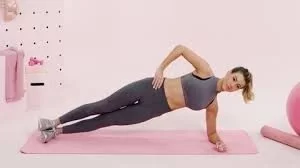
To work your obliques more, you can do a side plank raise.
How to do it:
- To do a side plank raise, start in a side plank position with your forearm on the ground and your body forming a straight line from your head to your heels.
- Raise your top leg off the ground until it is parallel to the floor.
- Hold for a second or two, then lower your leg back to the starting position.
- Repeat with the other side.
9. Plank raise with leg extension
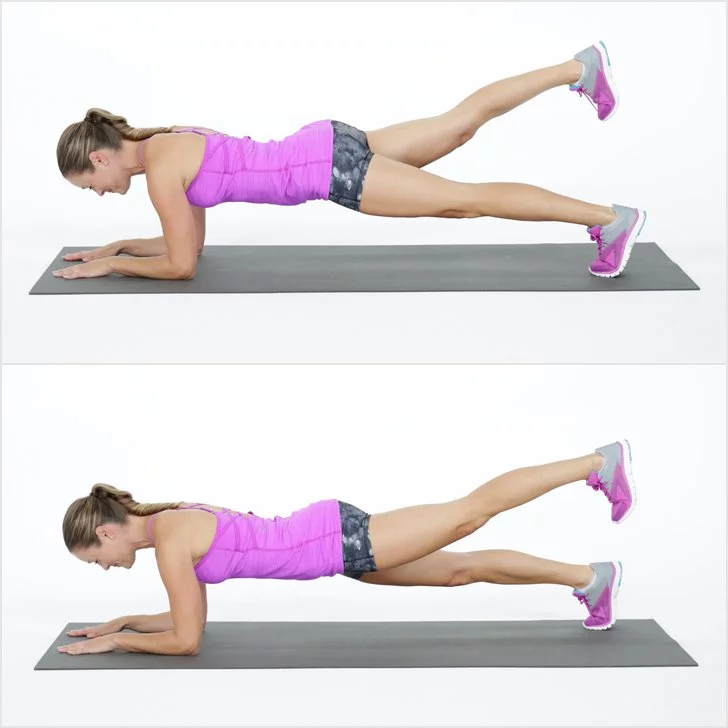
To make the exercise more challenging, you can add a leg extension
How to do it:
- To do a plank raise with leg extension, raise your leg off the ground and extend it straight out in front of you.
- Hold for a second or two, then lower your leg back to the starting position.
- Repeat with the other leg.
10. Squat
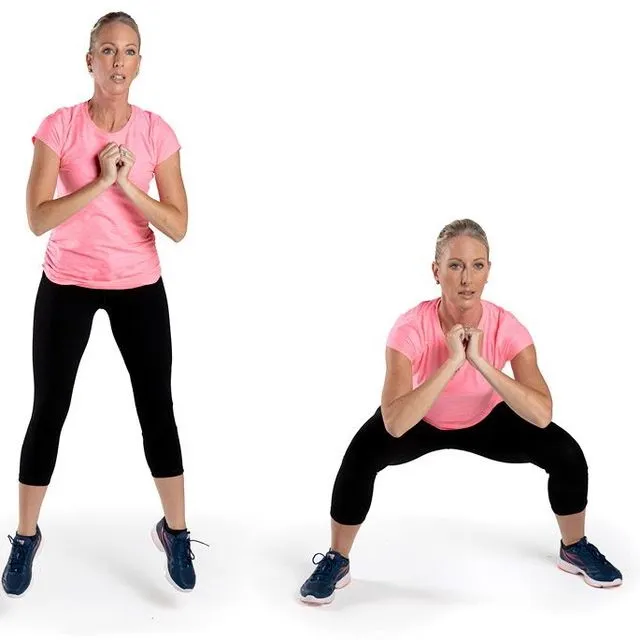
The squat is a compound exercise that targets the muscles in the legs, lower back, and core. It is one of the most effective workouts for building power and muscle mass in the lower body.
How to do it:
- Stand with your feet shoulder-width apart and your toes pointing a little outward.
- Lower your body down until your thighs are parallel to the ground or as low as you can go without compromising your form.
- Maintain your back straight and your core engaged during the whole movement.
- move via your heels to return to the starting place.
11. Burpees

The burpee is a full-body exercise targeting major muscle groups, including the legs, arms, chest, back, and core. It is a high-intensity exercise that can be used to improve cardiovascular fitness, build strength and muscle mass, and burn calories.
How to do it:
- Start in a standing position.
- Squat down and put your hands on the base in front of you.
- Hop on your feet back so that you are in a plank pose.
- Do a push-up.
- Hop your feet ahead so that they are next to your hands.
- Stand up and bounce into the air, clapping your hands overhead.
- Aim for 3 sets of 10-15 repetitions.
- If you are just starting, you may need to do fewer repetitions.
- As you get stronger, you can increase the number of repetitions and sets, and try more challenging variations.
- Hold your core engaged throughout the whole activity.
- Do not let your back sag or your hips drop.
- If you find the exercise too difficult, you can modify it by doing a half burpee (without the push-up) or by keeping your knees on the ground.
12. Lunge
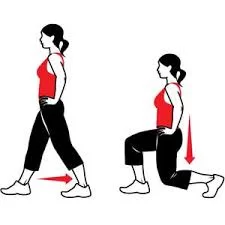
The lunge is a compound exercise that targets the major muscle groups in the lower body, including the quadriceps, hamstrings, glutes, and calves. It is a great exercise for building strength, improving balance, and increasing flexibility.
How to do it:
- Stand with your feet shoulder-width apart.
- Step ahead with one leg & lower your body down until both knees are flexed at a 90-degree angle.
- Make certain your front knee is directly over your ankle and your back knee is hovering just above the base.
- Maintain your back straight and your core engaged throughout the whole exercise.
- Move through your front heel to return to the initial position.
- Repeat on the other side.
- Keep your weight in your front heel as you lower down and push up.
- Do not permit your front knee to stretch beyond your toes.
- Maintain your back straight and your core engaged throughout the whole exercise.
- Breathe out on the exertion (as you push up) and inhale on the eccentric (as you lower down).
13. Side Lunge
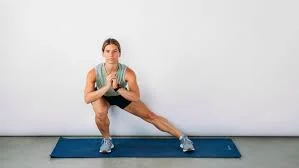
The side lunge is a compound exercise that targets the major muscle groups in the lower body, including the quadriceps, hamstrings, glutes, and inner and outer thighs. It is a great exercise for building strength, improving balance, and increasing flexibility.
How to do it:
- Stand with your feet shoulder-width apart.
- Take a step to the side with one leg, landing with your foot flat on the ground and your toes pointing slightly outward.
- Bring your thighs parallel to the ground by bending both knees.
- Maintain your back straight and your core engaged throughout the whole exercise.
- Drive through your heel to return to the initial position.
- Repeat on the other side.
- Keep your weight on your heel as you lower down and push up.
- Allow your knees to not extend beyond your toes.
- Hold your back straight and your core engaged throughout the whole exercise.
- Breathe out on the exertion (as you push up) and inhale on the eccentric (as you lower down).
- To make the movement more difficult, add weight by carrying a dumbbell in both hands.
14. Reverse lunge

The reverse lunge is a variation of the lunge that targets the glutes, hamstrings, and quadriceps. It is a unilateral activity, indicating that it works one leg at a time. This can assist in improving strength and balance asymmetries.
How to do a reverse lunge:
- Stand with your feet shoulder-width apart.
- Step back with one leg and lower your body until both knees are flexed at a 90-degree angle.
- Ensure that your front knee is directly over your ankle and your back knee is hovering just above the ground.
- Hold back straight and a tight core.
- Drive through your front heel and push back to the starting position.
- Repeat on the other side.
15. Weighted reverse lunge
The weighted reverse lunge is a variation of the reverse lunge that uses weights to add resistance to the exercise. This makes it a more challenging exercise that can help to build strength and muscle mass.
How to do a weighted reverse lunge:
- Grasp a dumbbell in both hands at your sides.
- Stand with your feet shoulder-width apart.
- Step back with one leg and lower yourself until your knees are at a 90-degree angle.
- Ensure your front knee is squarely over your ankle and your back knee is barely above the ground.
- Hold your back straight & your core tight.
- Drive through your front heel and push back to the starting position.
- Repeat on the other side.
16. Walking lunge
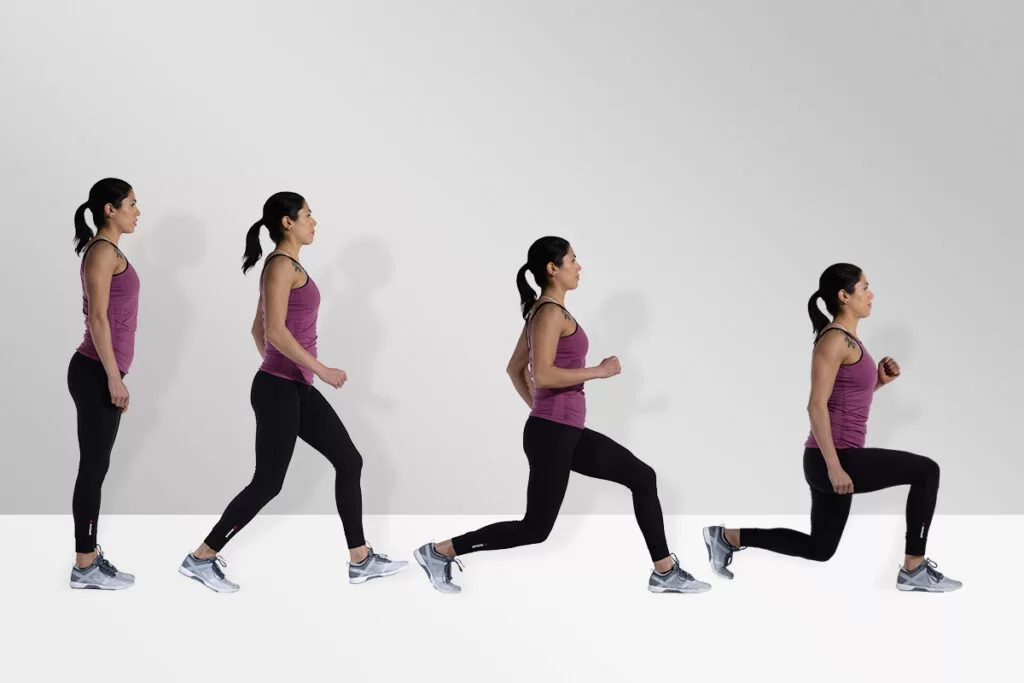
The walking lunge is a variation of the lunge that works for multiple muscle groups in the lower body, including the quadriceps, hamstrings, glutes, and calves. It is a dynamic exercise that helps to improve strength, power, balance, and coordination.
How to do a walking lunge:
- Stand with your feet hip-width apart.
- Step ahead with one leg and lower your body until both knees are flexed at a 90-degree curve.
- Ensure that your front knee is directly over your ankle and your back knee is hovering just above the ground.
- Hold your back straight & your core tight.
- Drive through your front heel and push off to step forward with your back leg.
- Lower your body into a lunge position with your back leg.
- Continue alternating legs and walking forward until you reach the end of your desired space.
17. Squat into the side leg lift
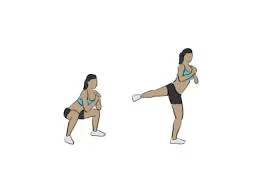
The squat into side leg lift is a compound exercise that works for multiple muscle groups in the lower body, including the quadriceps, hamstrings, glutes, and outer thighs. It is a dynamic exercise that helps to improve strength, power, balance, and coordination.
How to do a squat into a side leg lift:
- Stand with your feet shoulder-width apart.
- Squat down by bending your knees and lowering your hips until your thighs parallel the ground.
- Hold your back straight and your core tight.
- As you rise from the squat, swing one leg out to the side, keeping it straight.
- Return the leg to the starting position and squat down again.
- Repeat on the other side.
- If you are new to squatting into side leg lifts, it is important to start slowly and gradually increase the number of repetitions and sets that you perform as you get stronger.
- It is also necessary to listen to your body and quit if you sense any pain. If you have any concerns, talk to your doctor or a certified personal trainer before starting any new exercise program.
- Once you can perform 3 sets of 10-12 repetitions of squat into side leg lifts with good form, you can increase the weight or try a more challenging variation, such as the weighted squat into side leg lift, resistance band squat into side leg lift, or elevated squat into side leg lift.
18. Forward leg raises
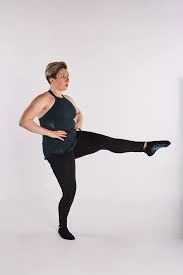
Forward leg raises are a bodyweight exercise that targets the rectus femoris, the muscle at the front of the thigh. They are also a good exercise for strengthening the core and improving balance.
How to do forward leg raises:
- lying on your back with your legs stretched and your arms at your sides.
- Keeping your core engaged, raise one leg off the ground until it is perpendicular to the floor.
- Return your leg to the starting position slowly and repeat on the other side.
- If you are new to forward leg raises, it is important to start slowly and gradually increase the number of repetitions and sets that you perform as you get stronger. It is also necessary to listen to your body and quit if you sense any ache.
- Once you can perform 3 sets of 10-12 repetitions of forward leg raises with good form, you can try a more challenging variation, such as the weighted forward leg raises.
19. Straight leg kickback
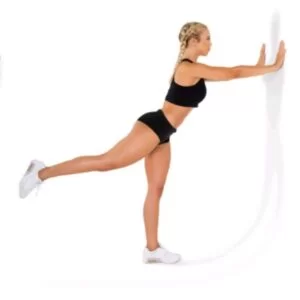
The straight-leg kickback is a bodyweight exercise that targets the glutes and hamstrings. It is a basic yet effective workout that can be performed anywhere and without the need for any equipment.
How to do a straight-leg kickback:
- Begin on your hands and knees, with your hands shoulder-width apart & your knees hip-width apart.
- Extend one leg straight back behind you, keeping your toes pointed.
- Engage your core and glutes, and lift your leg towards the ceiling until it is parallel to the floor.
- Hold this position for a second, then slowly lower your leg back to the starting position.
- Repeat on the other side.
20. Standing hamstring curl
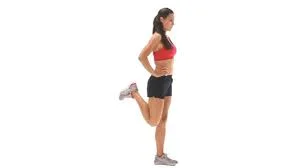
The standing hamstring curl is a bodyweight exercise that targets the hamstrings, and the muscles at the back of the thigh. It is a good exercise for improving hamstring strength and flexibility.
How to do a standing hamstring curl:
- Stand with your feet shoulder-width apart.
- Bring your heel up towards your buttocks by bending one knee.
- Hold your back straight & your core tight.
- keep the position for a second, then gradually lower your leg back to the initial position.
- Repeat on the other side.
- Weighted standing hamstring curl: Hold a dumbbell or ankle weight in the hand or foot of the bent leg.
- Resistance band standing hamstring curl: Loop a resistance band around the ankle of the bent leg and anchor the other end of the band to a stable object.
- One-legged standing hamstring curl: Balance on one leg and perform the standing hamstring curl with the other leg.
21. Single-leg deadlift
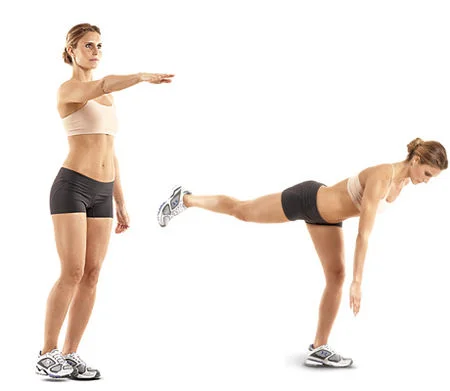
The single-leg deadlift is a compound exercise that targets multiple muscle groups in the lower body, including the hamstrings, glutes, quadriceps, and calves. It is a unilateral exercise, which means it only trains one leg at a time. This can help to increase strength & balance asymmetries.
How to do a single-leg deadlift:
- Stand with your feet hip-width apart.
- Raise one of your legs and extend it behind you.
- Keeping your back straight and your core engaged, hinge at the hips and lower your body until your torso is parallel to the ground.
- Make sure that your standing leg is straight and your heel is planted firmly on the ground.
- Hold the position for a second, then slowly push back up to the starting position.
- Repeat on the other side.
22. Skaters
Skaters are an excellent exercise for skaters of all levels. They help to improve balance, coordination, and agility. They also target the quadriceps, hamstrings, glutes, and calves.
How to do skaters:
- Begin with your feet hip-width apart and your knees bent slightly.
- Step out to the side with one leg, keeping your back straight and your core engaged.
- Swing the other leg behind you and cross it over the first leg.
- Land softly on the opposite foot and repeat on the other side.
- Continue alternating legs back and forth, as if you are skating.
Variations:
- Weighted skaters: Hold dumbbells in each hand as you perform the exercise.
- Explosive skaters: As you swing your leg behind you, explode up into a jump.
- Side-to-side skaters: Instead of crossing your leg over, step out to the side with the other leg.
23. Glute bridge
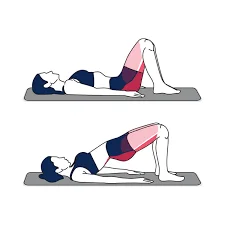
The glute bridge is a great exercise for strengthening your hamstrings, glutes, and core. It is also a relatively low-impact exercise, making it a good option for people with injuries or other limitations.
How to perform:
- Initiate by lying on your back with your knees bent and your feet flat on the floor. Set your hands, palms down, at your flanks.
- Form a straight line from your shoulders to your knees by raising your hips off the floor.
- Preserve this position for a few moments, then gradually decline your hips back to the initial position.
- You can make the glute bridge more challenging by adding a weight to your hips. To do this, place a weight plate or dumbbell on your hips before raising them off the floor.
- You can also add a band around your knees to make the exercise more difficult.
24. Side Lying leg raises
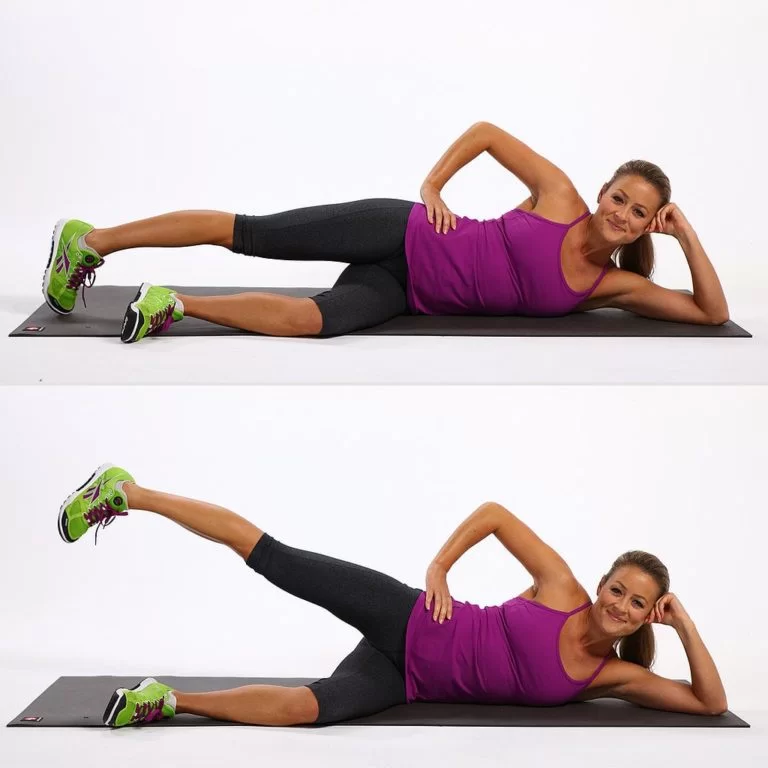
Side-lying leg raises are a great exercise for strengthening your outer thighs and hip abductors, which include the gluteus medius and minimus. They are also relatively easy to do and can be performed anywhere with no equipment required.
How to perform:
- Stretch your legs wide apart and stack them on top of one another while lying on your side.
- Put your arm straight on the base under your head or flex your elbow and cradle your head for support.
- Place your other hand on your hip or out in front of you for balance.
- As you exhale, gently raise your top leg off the lower leg. As soon as you feel your obliques or lower back muscles contract, stop elevating your leg.
- Hold the position for a second or two, then slowly lower your leg back down.
- Repeat for 10-15 repetitions, then switch sides.
- You can make the exercise more challenging by adding weight to your ankle or raising your leg. You can also try doing pulsed repetitions, which involve raising your leg slightly and lowering it back down without fully touching the ground.
25. Bicycle
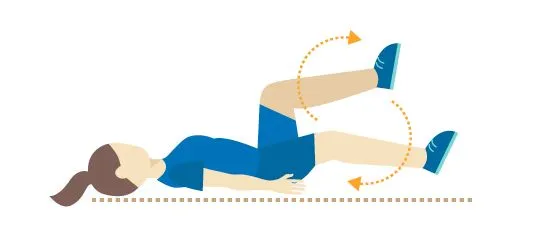
Bicycle exercise is a great way to improve your overall fitness and health. It is a low-impact activity that is easy on your joints, and it can be done at any fitness level. Bicycle exercise can be done outdoors on a bicycle, or indoors on a stationary bike.
Benefits of bicycle exercise
- Improves cardiovascular health
- Strengthens muscles and bones
- Reduces body fat
- Improves balance and coordination
- Reduces stress and anxiety
- Boosts mood and energy levels
- Lowers the risk of chronic diseases such as heart disease, stroke, and type 2 diabetes
How to do bicycle exercise
- To do bicycle exercise outdoors, simply ride a bicycle at a moderate pace for 30-60 minutes.
- If you are new to cycling, start with shorter rides and gradually increase the distance and intensity as you get fitter.
- To do bicycle exercise indoors, use a stationary bike. Set the resistance to a moderate level and pedal for 30-60 minutes.
- You can also try interval training, which involves alternating between short bursts of high-intensity pedaling and periods of rest or low-intensity pedaling.
variations of bicycle exercise
- Bicycle crunch:
- This exercise targets your core muscles, especially your obliques. Lie on your back with your knees bent and your feet flat on the floor to do a bicycle crunch.
- Place your hands behind your head and contract your core muscles. Raise one knee towards your chest while straightening the other leg.
- Turn your torso so that you can connect your elbow to the contrasting knee. Repeat on the other side.
- Standing bicycle crunch:
- This variation of the bicycle crunch is more challenging and targets your core and hip flexors. To do a standing bicycle crunch, stand with your feet shoulder-width apart and your hands behind your head.
- Raise one knee towards your chest while rotating your torso so that you can touch your elbow to the opposite knee.
- Return to the starting position and do the contrasting side.
- Air cycling:
- This activity works your legs, core, & arms.
- To do air cycling, lie on your back with your knees bent and your feet flat on the floor. Place your hands behind your head and contract your core muscles.
- As if you were riding a bicycle, pedal your legs in the air
Tips for bicycle exercise
- Warm up by doing some mild aerobic and dynamic stretches before you begin exercising.
- Cool down after your exercise with some stationary stretches.
- Before, during, and after your workout, take lots of water.
- Wear comfortable clothing and shoes.
- Give awareness to your body and take breaks as required.
Aerobic for Full-Body Exercises
Aerobic exercise, commonly known as cardio, refers to any exercise that raises your heart rate and causes your blood to flow. It is one of the most important types of exercise for overall health, as it has many benefits for the heart, lungs, and other organs.
Benefits of aerobic exercise
- Improves cardiovascular health: Aerobic exercise strengthens the heart and improves its ability to pump blood throughout the body. This can assist in lowering blood pressure, lowering the risk of heart disease and stroke, and improving overall cardiovascular health.
- Strengthens muscles and bones: Aerobic exercise helps to build and strengthen muscles and bones. This can assist in improving balance and coordination while also lowering the chance of falls and accidents.
- Reduces body fat: Aerobic exercise can help to burn calories and reduce body fat. This can lead to weight loss or maintenance, and can also help to reduce the risk of chronic diseases such as type 2 diabetes and heart disease.
- Improves mood and energy levels: Aerobic exercise can help to release endorphins, which have mood-boosting and energy-boosting effects. It can also help in decreasing stress and anxiety.
- Boosts brain power: Aerobic exercise has been shown to improve cognitive function, memory, and learning. It can also assist in guarding against age-related mental decline.
Examples of aerobic exercise
There are many various forms of aerobic exercise, so you may select one that you enjoy and fits into your lifestyle. Some common examples include:
- Running
- Walking
- Biking
- Swimming
- Dancing
- Aerobics classes
- Hiking
- Sports such as basketball, soccer, and tennis
How much aerobic exercise do you need?
- Each week, adults should engage in at least 150 minutes of moderate-intensity aerobic exercise or 75 minutes of vigorous-intensity aerobic activity.
- Children and adolescents should engage in at least 60 minutes of physical activity each day, with the majority of the time spent doing moderate- to vigorous-intensity aerobic activity.
Tips for getting started with aerobic exercise
If you are new to aerobic activity, start carefully and progressively increase your weekly exercise time. It is also important to warm up before you start exercising and to cool down afterward.
Here are some more tips to help you get started with aerobic exercise:
- Find an activity that you enjoy. This will make it more likely that you will stick with it.
- Set realistic goals.
- Don’t do too much too soon.
- Find a workout companion. Keeping a person to exercise with can assist you in remaining motivated.
- Pay attention to your body and take pauses when required.
- Make exercise a part of your routine. Plan time for training in your day specifically as you would any other necessary appointment.
- Aerobic exercise is a necessary part of a fit lifestyle. It has many benefits for the heart, lungs, and other organs.
- If you are not currently getting enough aerobic exercise, start slowly and gradually increase the amount of time you exercise each week.
- Find an exercise that you enjoy and that matches your lifestyle.
Tips for getting the most out of your Full-Body Exercises
- Focus on compound exercises. Combination exercises are exercises that work for numerous muscle groups at the same time. They are more efficient and effective than isolation exercises, which only work one muscle group at a time.
- Choose the right weight. It would help if you chose a challenging weight that allows you to maintain good form throughout the entire exercise.
- Use progressive overload. Progressive overload is gradually increasing the weight or resistance you use over time. This is essential for constructing power and strength.
- Get enough rest. Recovery is just as important as training when it comes to building muscle and strength. Confirm you gain at least 7 to 8 hours of sleep every night.
- Doing exercises or an intense exercise session for the first time can make the muscles ache person should make sure to give themselves a rest day to allow their muscles to recover.
- Gradually increasing the intensity of a workout while practicing it for the first time. This will assist in the avoidance of injuries.
- If you are new to exercise, talking to your doctor before starting any new workout routine is a good idea.
FAQs
What are full-body exercises?
A full-body exercise is a movement that works for multiple muscle groups in your body at the same time. This type of exercise is efficient because it allows you to target multiple muscle groups in a single workout. Full-body exercises are also effective for building muscle, burning calories, and improving overall fitness.
Which workouts are best for a full body?
Here are some examples of full-body exercises:
Squats: Squats work your quads, hamstrings, glutes, and core muscles.
Deadlifts: Deadlifts work your hamstrings, glutes, back muscles, and core muscles.
Burpees: Burpees are a combination of a push-up, a squat, and a jump. They work your chest, triceps, shoulders, quads, hamstrings, glutes, and core muscles.
Lunges: Lunges work your quads, hamstrings, glutes, and core muscles.
Push-ups: Push-ups work your chest, triceps, shoulders, and core muscles.
Pull-ups: Pull-ups work your back muscles, biceps, and forearms.
Rows: Rows work your back muscles, biceps, and forearms.
Overhead press: Overhead press works your shoulders, triceps, and upper chest muscles.
Can I able to perform full-body exercises at home?
You can do full-body exercises at home or in the gym. If you’re new to physical fitness, start cautiously and gradually increase the intensity and duration of your exercises over time. Before starting any new exercise program, consult with your physician for guidance.
References
- Huzar, T. (2019, April 5). List of the best full-body exercises. https://www.medicalnewstoday.com/articles/324895
- Davies, D., & Hicks, R. (2023, October 24). Become the Strongest, Leanest Version of Yourself with 5 Full-Body Workouts. Men’s Health. https://www.menshealth.com/uk/building-muscle/a28433729/full-body-workouts/
- Rd, S. H. M., & Turbett, J. (2023, August 30). 8 of the best full-body exercises to get you in shape. The Manual. https://www.themanual.com/fitness/best-full-body-workouts/
- Lawler, M. (2023, July 10). Body-weight exercises for arms, legs, core, and more. EverydayHealth.com. https://www.everydayhealth.com/fitness/the-best-bodyweight-exercises-for-working-out-every-part-of-your-body/

